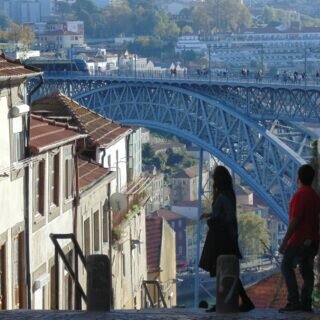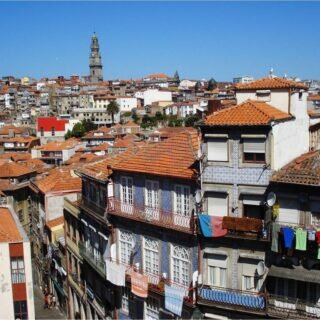Everyone knows that Portugal has a really strong tie with religion, especially the Catholic. But what not everyone knows is that this fact is extremely connected with the Portuguese pastry, which is one of the most beloved types of pastries in the world. But how come religious and sweets can be so connected to each other?

Around the 18th and 19th century, the country was the biggest producer of eggs in the whole Europe, and used to export the egg whites to other places (it is said that the egg whites were used in the process of making white wine and also to clearstarch the clothes of rich people!). Early on, the egg yolks were thrown out or used to feed the animals, but everything changed when enormous amounts of sugar started to arrive in Portugal, coming from the then Portuguese colonies. The egg yolks and the sugar were mixed together and the Portuguese pastry found its foundation!
Back then, Portugal was packed with convents, monasteries and other religious institutions. The nuns used to cook different recipes as a way to pass the time and ended up improving a lot of them, and that’s why the Portuguese pastry is known as “Doçaria Conventual” (translated as conventual sweets). They had a lot of egg yolks and sugar on hand so different version with that mixture was created! When, in the 18th century, the religious orders were extinguished, the nuns and friars used to sell the sweets to raise money for their support. Their spread the recipes to the people that used to help them and the Portuguese pastry become what is today!
Cornucópias, Barrigas de Freira, Castanhas Doces, Pudim do Abade, Sopa Dourada, Toucinho do Céu, Papos de Anjo, Trouxas de Ovos, Pastéis de Lorvão, Pastéis de Tentugal, Lampreia de Ovos, Pão de Rala… There’s so many conventual sweets that is hard to say which one is the best. To help you in this sweet task, here’s our top 5 Conventual Pastry to try in Porto:
 Jesuítas
Jesuítas
Translated as Jesuits, this pastry has a triangular shape and is made of puff pastry, filled with cinnamon egg cream (doce de ovos) and a crisp icing on top. Some varieties are topped with almonds, so you should try both and see which one you like the most :D
Toucinho do céu
Google translator translate this as “Bacon from heaven”! Toucinho do céu is a sort of a cake made with sugar and almonds, mixed with egg cream and sometimes doce de gila (a kind of jam made of pumpkin). The name came from the fact that originally this recipe used pig fat as an ingredient!

Papo de anjo
Made with egg yolks and sugar (oh really?), this is one of the most famous sweets and also one of the most difficult to make! The name is hard to translate… just go to Confeitaria do Bolhão and ask for one!
Barriga de Freira
This sweet, named as “nun belly”, is one of the most traditional and is always there when is Christmas time. The dough is very thin and peculiar, filled with egg cream and ground almonds. Goes very well together with some Port wine!
 Castanha de ovos
Castanha de ovos
The name of this sweet combine two of the most traditional ingredients in Portugal: eggs and nuts! This little sugar bombs are made with egg yolks, sugar, a little bit of water and flour, and they look like the very typical nuts that we eat during winter!
Hope you liked our list and are now felling hungry! Check here other tips of what to eat in Porto: 5 places to have great typical sandwiches, 5 places to have great gourmet sandwiches and 5 delicious vegetarians restaurants in Porto.
Join us in a Food Tour with Wine Tasting to discover – and taste – the authentical Portuguese cuisine, including some pastry ;)





